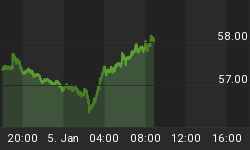Amid sanctions fears, Iranians have reportedly spent over $2.5 billion on cryptocurrencies to get their cash out of the country in a new form of digital capital flight.
The Iranian version aired on state-run media was buried at the bottom on a long discourse on cryptocurrencies, and downplayed as to its significance, but it comes as the Iranian rial plunges to new lows against the U.S. dollar, the climax of which has been Trump’s formal announcement of a withdrawal from the nuclear deal.
Shortly after Trump’s announcement last week, the rial nose-dived to 65,000 to 1 US dollar, down from 57,500 rials to 1 US dollar at the end of April, and 42,890 at the end of last year.
Since April, Iran has been attempting to get in front of a sell-off, first unifying official and free-market exchange rates and freezing the rate at 42,000, while banning all other trading in the currency, under threat of arrest.
The rial is expected to dive further on news Tuesday that the U.S. has sanctioned Iran’s central bank head.
Late last week, the U.S. levied sanctions on a financing network, accusing the Iranian central bank of helping funnel U.S. dollars to its Quds Force elite military unit, which is on a U.S. blacklist.
This was followed by another move on Tuesday that saw terror sanctions slapped on the head of the Iranian central bank, Valiollah Seif, whom Washington has accused of secretly funneling millions of dollars through an Iraqi bank to help Hezbollah. The sanctions also include bank senior official Ali Tarzali. Both have been listed as “specially designated global terrorists”.
At the same time, Iranian government moves to head off a currency crisis could lead to further capital flight via cryptocurrencies.
On Monday, the Central Bank issued a new directive setting stricter limits on the amount of foreign cash travelers can take with them out of the country. Travelers can leave Iran by air now with only $5,980 (5,000 euros, or the equivalent in any foreign currency). The new amount halves the previous amount allowed. Leaving by land, rail or sea has a limit of $2,392 per person. Related: Investment Funds Enjoy Short-Lived Victory Over S&P 500
Also in April, the central bank banned the country’s banks from offering services to cryptocurrency firms or from dealing in cryptocurrencies domestically. This has led to a flourishing business for cross-border crypto deals with Iranian citizens desperate to get their money out.
While the initial justification for the ban was to thwart money-laundering and terrorism financing, the Iranian Financial Tribune quoted an Iranian official as saying that the move was intended to stop capital flight.
“The ban on trade of cryptocurrencies such as Bitcoin by CBI, as the financial and currency regulator of the country, is to prevent the flight of foreign currency under the current circumstances of the country.”
Now that the original ban has backfired and possibly led to increased capital flight, the government seems to be wavering, suggesting that the policy might not be set in stone and a new regulatory framework should be in place by the third quarter of this year.
In the meantime, capital flight will be hard to stop, especially considering that all of the government’s recent actions undo their liberal economic policymaking of the past years.
By Michael Kern for Safehaven.com
More Top Reads From Safehaven.com:
















